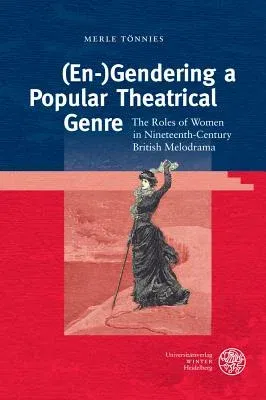Merle Tonnies
(Author)(en-)Gendering a Popular Theatrical Genre: The Roles of Women in Nineteenth-Century British MelodramaHardcover, 1 April 2014

Qty
1
Turbo
Ships in 2 - 3 days
In Stock
Free Delivery
Cash on Delivery
15 Days
Free Returns
Secure Checkout

Part of Series
Anglistische Forschungen
Print Length
365 pages
Language
English
Publisher
Universitatsverlag Winter
Date Published
1 Apr 2014
ISBN-10
3825362760
ISBN-13
9783825362768
Description
Product Details
Author:
Book Format:
Hardcover
Country of Origin:
DE
Date Published:
1 April 2014
ISBN-10:
3825362760
ISBN-13:
9783825362768
Language:
English
Location:
Heidelberg
Pages:
365
Publisher:
Series: